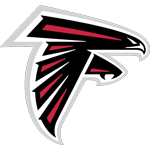Kyle Pitts is a 6-6, 245-pound tight end with 10 5/8-inch hands. He attended the University of Florida and established himself early as an elite collegiate prospect. During his sophomore campaign, he led the Gators’ passing offense with 54 catches for 649 yards and five touchdowns while playing alongside future NFL receivers Kadarius Toney and Van Jefferson en route to being named First-Team All-SEC.
In 2020, Pitts' junior season, he brought in 43 catches for 770 yards and 12 touchdowns. That was despite playing in only eight games and missing others with a concussion. With fellow future NFL prospect Toney, Pitts helped Kyle Trask put up over 4,200 yards passing and 43 touchdowns. Pitts won the John Mackey Award for the top tight end because of his performance. Even more impressive, he became the first tight end to be named a finalist for the Fred Biletnikoff Award, which goes to the top wide receiver in college football.
Tight ends rarely go in the first round of the NFL draft - much less in the top-five. But despite a need to find their next franchise quarterback, the Atlanta Falcons drafted Pitts with the fourth overall pick in the 2021 NFL Draft. They chose Pitts over dual-threat QB Justin Fields and 4,500-yard passer Mac Jones. Pitts posted impressive athleticism metrics at the NFL Combine, running a 4.49 (98th-percentile) 40-Yard Dash.
At 21 years old, Pitts finished his rookie season in the NFL with over 1,000 yards receiving. It may be the quietest 1000-yard season ever for a tight end because the athletic TE only found the end zone once all season. That was likely due to touchdown variance, as the Falcons peppered him with 110 (No. 5) targets that season. They were also missing their No. 1 wide receiver, Calvin Ridley, for most of the year and had traded Julio Jones away in the offseason.
Pitts was also top-5 in Air Yards (1110), Air Yards Share (28.3-percent), Completed Air Yards (698), and Unrealized Air Yards (412) in his rookie season. His 81.5-percent Route Participation and 20.3-percent Target Share were both top-six. Pitts is basically a wide receiver playing tight end. His top-5 Average Target Distance (10.1), Yards Per Reception (15.1), and Yards Per Route Run (2.20) are all great marks for a receiver.
In his second season, Pitts’ production dipped, as he missed several games due to injury. Playing in ten games, he finished with 28 receptions for 356 yards and two receiving touchdowns (one more than in his rookie season). Despite what appeared to be a down year in production, Pitts’ usage and efficiency rates were still very good. He had a 27.3-percent (No. 2) Target Share and 2.07 (No. 5) Yards Per Route run. Pitts was once again held back by poor quarterback play in his third year. It didnt help matters that his coach would rather draw up plays for his back up in the redone than Pitts himself, but now with Arthur Smith gone, Pitts appears ready to take the next step and become an elite tight end in the league.









